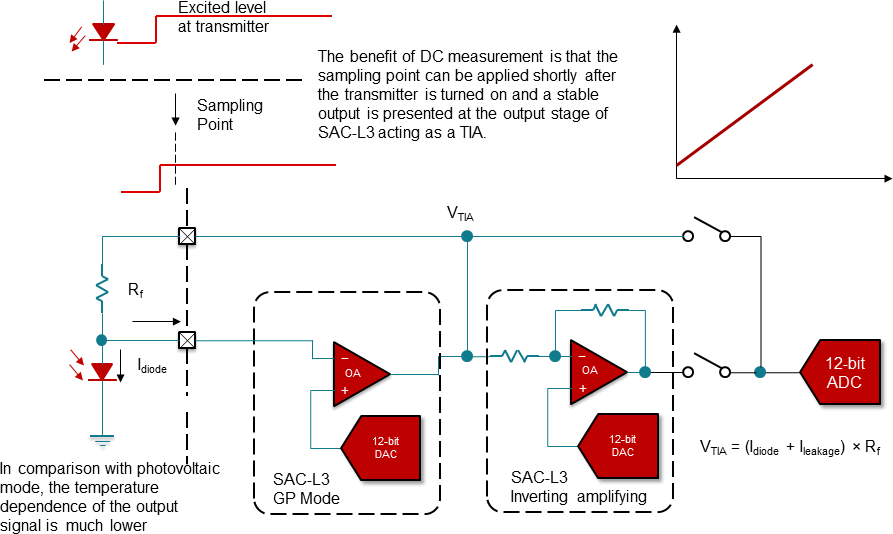SLAA835B May 2018 – August 2018 MSP430FR2353 , MSP430FR2355
2.1 Smoke Detection
There are two methods for smoke detection using ACmeasurement or DC measurement.
For AC measurement, a general voltage signal conditioner measures the photodiode current, through a DC blocker (usually a large capacitor) before analog-to-digital conversion. Figure 1 shows an AC measurement-based smoke detector implemented using two smart analog combo SAC-L3 configurations.
 Figure 1. Block Diagram Showing AC Measurement in a Smoke Detector Application Using the MSP430 Smart Analog Combo
Figure 1. Block Diagram Showing AC Measurement in a Smoke Detector Application Using the MSP430 Smart Analog Combo For DC measurement, a current-to-voltage converter (usually a transimpedance amplifier (TIA) with low-leakage input) measures the photodiode current, with an optional second-stage voltage signal conditioner before analog-to-digital conversion. By replacing the feedback circuit with a diode or transistor, the application can include a logarithmic amplifier in parallel to extend the measurable dynamic range by compressing the large signal outputs The smart analog combo can act as a TIA, and internal connections with the ADC and a paired SAC can save more GPIOs. Figure 2 shows a DC measurement-based smoke detector implemented using the smart analog combo SAC-L3 configuration.
 Figure 2. Block Diagram Showing DC Measurement in a Smoke Detector Application Using the MSP430 Smart Analog Combo
Figure 2. Block Diagram Showing DC Measurement in a Smoke Detector Application Using the MSP430 Smart Analog Combo